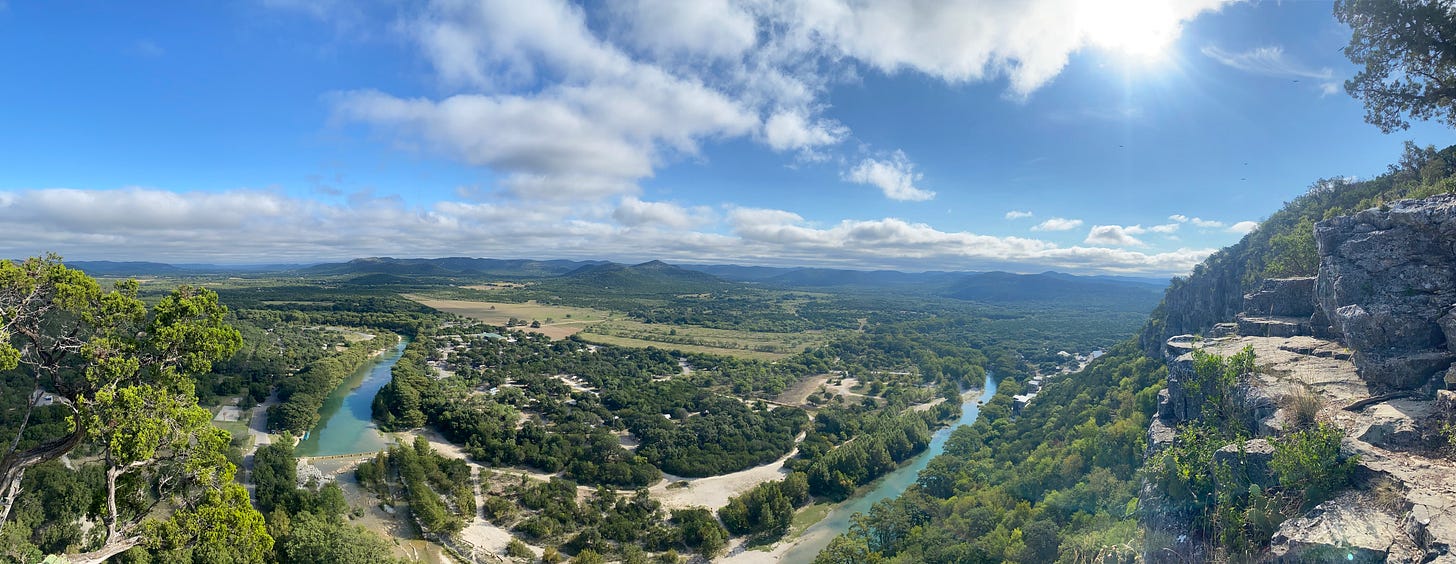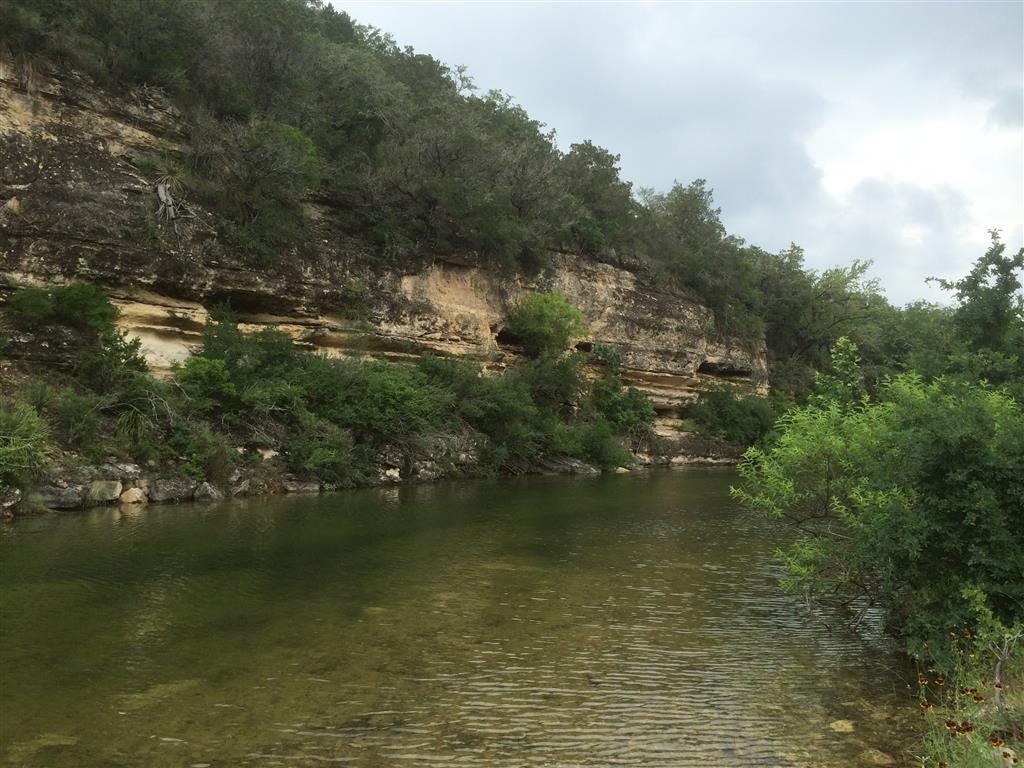$1 Billion Fund Drives Historic State Park Expansion in Texas
New Post Oak Ridge State Park to Open in Central Texas as Voters' Investment Begins Transforming Recreation Access Across America's Second-Largest State
Texas Parks and Wildlife Department has launched an unprecedented expansion of the state's park system using the $1 billion Centennial Parks Conservation Fund approved by voters in 2023, with the first major acquisition creating Post Oak Ridge State Park along Yancey Creek in the Texas Hill Country northwest of Austin. The 3,000-acre park, developed from two former ranches purchased for $47.1 million, represents the beginning of Texas's most ambitious public land acquisition program since the 1980s and addresses the state's ranking as 35th nationally in state park acreage per capita.
The initiative responds to growing demand from Texas's 30 million residents and aims to add significant parkland to a system that currently encompasses only 636,000 acres—less than half a percent of the state's total landmass.
"Like any good business, you need to know what you have before you start. You can't make good plans until you know what it is you've got."
— Andy Sipocz, TPWD Natural Resources Coordinator
Breaking Decades-Old Acquisition Drought
The Centennial Parks Conservation Fund marks a dramatic departure from decades of limited park development, enabling the Texas Parks and Wildlife Department (TPWD) to pursue aggressive land acquisition after a generation-long pause. Andy Sipocz, a natural resources coordinator and biologist with TPWD who has worked for the agency for 35 years, emphasized the historic nature of the current expansion.
"This is kind of a new thing for the department," Sipocz told The Texas Tribune during recent field surveys at the future Post Oak Ridge State Park. "There was a big burst of acquisitions of parks in the '70s and '80s, and there hasn't been since. That's what makes this so exciting."
The renewed investment comes after the controversial 2023 closure of Fairfield Lake State Park, a 1,800-acre facility about 100 miles south of Dallas that was lost when the private power company leasing the land chose to sell it to a luxury housing developer. That closure galvanized public support for purchasing rather than leasing parkland, with 17 parks still operating on leased land today.
Strategic Acquisitions Target Recreation Gaps
Post Oak Ridge State Park exemplifies TPWD's strategic approach to new acquisitions, combining prime location within the Texas Triangle formed by Houston, San Antonio, and Dallas-Fort Worth with diverse terrain including sweeping canyons and Colorado River frontage. JJ Fleury, the program director for planning and geospatial resources at TPWD, explained the property's appeal during the acquisition process.
"Fleury said the park checked a lot of boxes: within the Texas Triangle formed by Houston, San Antonio, and Dallas-Fort Worth, varied terrain like sweeping canyons and frontage along the Colorado River," according to The Texas Tribune's reporting on the site selection process.
The new park will connect with the existing Colorado Bend State Park ecosystem, creating what Fleury described as a 10,000-acre conservation area with regional ecological significance. Additionally, Post Oak Ridge will fill recreational gaps by offering cabins and RV camping facilities that Colorado Bend currently lacks.
Ambitious Timeline Promises Rapid Public Access
The Centennial Parks funding enables an accelerated development timeline that promises public access within months rather than years. TPWD has established three distinct phases for bringing new parks online, with Post Oak Ridge serving as the prototype for this streamlined approach.
"With the Centennial parks funding, the timeline is fast," Fleury explained to reporters. "He said that people can expect to have access to Post Oak Ridge State Park, the new park at Yancey Creek, within a year. That could mean guided tours, paddling, birding or limited day use on existing ranch roads."
The development phases include facilitated public day use within 12 months, basic facilities including trails and restrooms within 18 months, and full park infrastructure including overnight facilities within four years. Public hunting opportunities will be available for the 2025-2026 hunting season.
"It's like building a small city."
— JJ Fleury on park development complexity
Scientific Approach Guides Development Planning
TPWD's methodical approach to park development begins with comprehensive ecological surveys designed to protect sensitive habitats while maximizing recreational opportunities. During a June fieldwork session at Post Oak Ridge, teams of biologists, herpetologists, and hydrologists conducted detailed species inventories using techniques including electrofishing and habitat mapping.
Greg Creacy, a natural resources program director for Texas State Parks, emphasized how scientific data drives development decisions. "[That knowledge] informs our plans for how to conserve these systems and these species over the long haul," Creacy explained during the field surveys. "It also informs how we manage the site, how we develop, and how the public uses the site recreationally, and doesn't negatively impact those resources."
The teams discovered diverse aquatic life, including longear sunfish, sand shiners, and Texas tetra, along with various reptiles and amphibians that will influence trail placement and facility design. All species data is logged using the iNaturalist app to create comprehensive ecological baselines for future management.
Addressing Texas's Public Land Deficit
The Centennial Parks initiative directly addresses Texas's significant deficit in public recreational land compared to other states. According to a 2022 Environment Texas report, the state ranks 35th nationally in state park acreage per capita, with recommendations to add 1.4 million acres by 2030 to meet residents' needs.
Current Texas state parks encompass approximately 636,000 acres serving a population exceeding 29 million people, representing less than 5% of publicly owned land statewide. This compares unfavorably to other large states and reflects decades of rapid population growth outpacing park development.
The $1 billion fund, generated through legislative action rather than tax increases, provides sustainable financing for land acquisition from willing sellers when unique properties become available. Texas voters approved the constitutional amendment creating the fund with overwhelming bipartisan support in 2023.
Enchanted Rock Expansion Demonstrates Program Success
Beyond Post Oak Ridge, the Centennial Parks program has already achieved significant conservation victories, including major expansions at existing facilities. Enchanted Rock State Natural Area received 3,702 additional acres in 2024 and 2025, with public hunting opportunities available for the upcoming season.
The Enchanted Rock expansion demonstrates the program's dual focus on creating entirely new parks while strategically enlarging existing popular destinations. This approach maximizes conservation impact while addressing overcrowding at established facilities that attract nearly 10 million visitors annually across the state park system.
Economic and Conservation Benefits Drive Support
Beyond recreational access, the Centennial Parks program delivers significant economic and environmental benefits that have sustained broad political support. State parks contribute to local economies through tourism while preserving critical habitat and water resources from development pressure.
Governor Greg Abbott has emphasized the parks' role in Texas's quality of life, stating that state parks "offer Texans and visitors an awe-inspiring look at our great state" while providing essential natural experiences amid rapid urbanization. The program particularly addresses concerns about losing nearly 250,000 acres of farms, ranches, and open space to development annually.
Jeff Hildebrand, chairman of the Texas Parks and Wildlife Commission, celebrated recent acquisitions as providing "public access and conserving their beautiful landscapes for years to come," emphasizing the permanent conservation benefits of state ownership versus private development.
Public Engagement Shapes Park Development
TPWD's planning process emphasizes extensive public consultation to ensure new parks meet community needs and preferences. The agency will conduct local and regional public meetings to gather input on recreational priorities, from day-use facilities to overnight accommodations and specialized activities like paddling access.
"The idea is to gauge what kinds of experiences people want — day use, overnight facilities, paddling access, etc. — and test the early concept plans before they're finalized," according to TPWD's public engagement strategy outlined in planning documents.
This collaborative approach reflects lessons learned from decades of park operations and recognition that successful parks must balance conservation goals with diverse recreational demands from Texas's growing and increasingly diverse population.
Transforming Texas Recreation
The Centennial Parks Conservation Fund represents a generational investment in Texas's recreational and conservation future, addressing decades of underinvestment while positioning the state for continued population growth. As TPWD pursues additional acquisitions and develops newly purchased properties, the program could fundamentally transform public land access across America's second-largest state.
With Post Oak Ridge State Park leading the way as the program's flagship project, Texans can expect dramatically expanded recreational opportunities within the next several years. The success of this initial phase will likely influence similar conservation initiatives nationwide and demonstrate how strategic public investment can preserve natural heritage while meeting growing recreational demand in rapidly developing regions.




